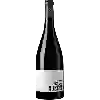
Winery GaydaFlying Solo Grenache - Cinsault Rosé
In the mouth this pink wine is a with a nice freshness.
This wine generally goes well with vegetarian, appetizers and snacks or lean fish.
Taste structure of the Flying Solo Grenache - Cinsault Rosé from the Winery Gayda
Light | Bold | |
Dry | Sweet | |
Soft | Acidic |
In the mouth the Flying Solo Grenache - Cinsault Rosé of Winery Gayda in the region of Languedoc-Roussillon is a with a nice freshness.
Wine flavors and olphactive analysis
On the nose the Flying Solo Grenache - Cinsault Rosé of Winery Gayda in the region of Languedoc-Roussillon often reveals types of flavors of citrus, peach or strawberries and sometimes also flavors of raspberry, pear or tree fruit.
Food and wine pairings with Flying Solo Grenache - Cinsault Rosé
Pairings that work perfectly with Flying Solo Grenache - Cinsault Rosé
Original food and wine pairings with Flying Solo Grenache - Cinsault Rosé
The Flying Solo Grenache - Cinsault Rosé of Winery Gayda matches generally quite well with dishes of pasta, vegetarian or appetizers and snacks such as recipes of mami's macaroni and gruyere gratin, vegan leek and tofu quiche or peach and tuna verrine.
Details and technical informations about Winery Gayda's Flying Solo Grenache - Cinsault Rosé.
Discover the grape variety: Valensi
He is said to be of Spanish origin from the Valencia region. It can also be found in Israel. In France, it is almost endangered, although it is registered in the Official Catalogue of table grape varieties, list A1.
Last vintages of this wine
The best vintages of Flying Solo Grenache - Cinsault Rosé from Winery Gayda are 2018, 2017, 2016, 2015
Informations about the Winery Gayda
The Winery Gayda is one of of the world's great estates. It offers 48 wines for sale in the of Languedoc-Roussillon to come and discover on site or to buy online.
The wine region of Languedoc-Roussillon
Languedoc (formerly Coteaux du Languedoc) is a key appellation used in the Languedoc-Roussillon wine region of southern France. It covers Dry table wines of all three colors (red, white and rosé) from the entire region, but leaves Sweet and Sparkling wines to other more specialized appellations. About 75% of all Languedoc wines are red, with the remaining 25% split roughly down the middle between whites and rosés. The appellation covers most of the Languedoc region and almost a third of all the vineyards in France.
News related to this wine
An overview of Morey Saint Denis appellation
The Bourgogne Wine Board (BIVB) invites you to a survey above the vineyard of Morey-Saint-Denis, typical of the côte de Nuits region. Situated at the center of this region, the vineyard neighbours the appellation Gevrey-Chambertin to the north and Chambolle-Musigny to the south. Our social media: Facebook: https://www.facebook.com/BourgogneWines Twitter: https://twitter.com/BourgogneWines/ Instagram: https://www.instagram.com/vinsdebourgogne/ LinkedIn: https://www.linkedin.com/company/bivb ...
Bourgogne wines : The fundamentals
Understand (or almost) everything about Bourgogne wines in less than a minute? Just do it! Our social media: Facebook: https://www.facebook.com/BourgogneWines/ Twitter: https://twitter.com/BourgogneWines/ Instagram: https://www.instagram.com/vinsdebourgogne/ LinkedIn: https://www.linkedin.com/company/bivb Find out more on our website: https://www.bourgogne-wines.com/ #BourgogneWines #Bourgogne ...
At the heart of the terroirs of Mâcon-Saint-Gengoux-Le-National
Sequence from the video « At the heart of the Mâcon terroir » which offer a stroll at the heart of the Mâcon terroir. It offers a focus on Mâcon-Saint-Gengoux-Le-National, one of the 27 geographical denominations of the Mâcon appellation. Travel through the terroirs of the Mâcon appellation by watching the full video : https://www.youtube.com/watch?v=GF20y1aBZh8 Both are available in French and English. Our social media: Facebook: https://www.facebook.com/BourgogneWines Twitter: https://twitte ...
The word of the wine: Overmaturation
When the grapes reach maturity, the skin becomes permeable and progressively loses water, which causes a concentration phenomenon inside the berry. This is called over-ripening or passerillage.














